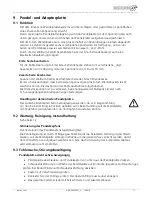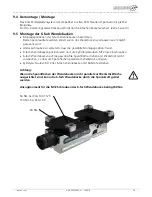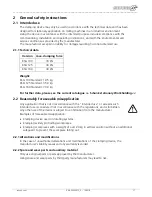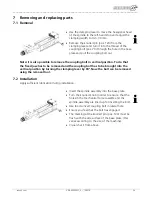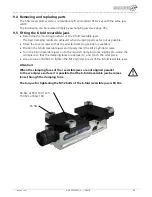
_________________________________________________________________________________________
schunk.com
XND.00005.022_A – 10/2018
28
2.3
Residual risk
The user is responsible for applying the correct workpiece tension.
New clampings have to be carefully checked by qualified personnel with relevant training.
One always needs to allow for the risk that the workpiece may slip or be dislodged, even
when the clamping device is functioning correctly; this is due to the different geometries to
be clamped, contact surfaces, clamping friction values, processing force, wrong manipulation
of the milling machine etc.
Protective devices are to be attached to the processing machine that will protect the operator
from any tool or workpiece parts that may be ejected.
It is mandatory that operators and others in the proximity of the processing machine wear
protective goggles.
The clamping device must not be used in any way that impairs its function and operational safety.
2.3.1
Jaw change
Damage may result if system jaws are insufficiently tightened!
For further information, refer to section 4 "Operation".
2.3.2
Notes on clamping technology
The operator is responsible for ensuring that the clamping geometry and clamping forces are
suitable for the intended processing.
The clamping forces can only be achieved if the clamping device functions correctly and the
workpiece is correctly held in the device.
Regular servicing and cleaning in accordance with the operating instructions is mandatory in
order to ensure correct function.
When clamping thin-walled elastic workpieces, e.g. tubes or packages, it is possible
that the clamping force is significantly reduced due to yielding of the workpiece.
When clamping with a high degree of force, the clamping force is significantly reduced
due to the increased frictional forces in the carriage.
When clamping 100 mm above the base plate, the loss of clamping force is approx. 40%.
2.4
Duties of the organisation in charge
The organisation in charge of the device undertakes to only allow operatives to work on the device:
who are familiar with the basic health and safety regulations and regulations for the
prevention of accidents.
who have completed appropriate induction for working with the machine.
who have read and understood these operating instructions.
The requirements of the EC Directive 2007/30/EC on the use of work machinery must be
complied with.




